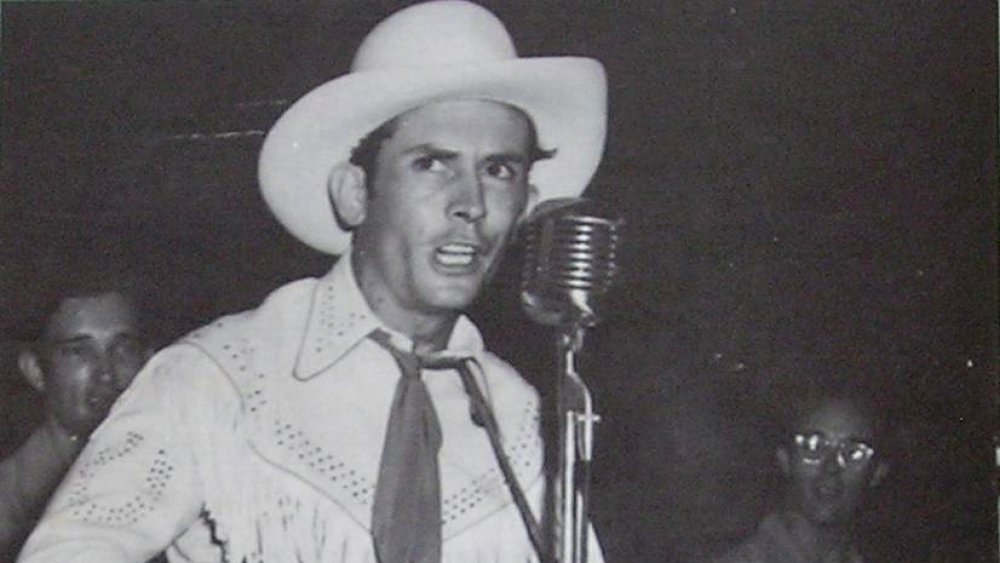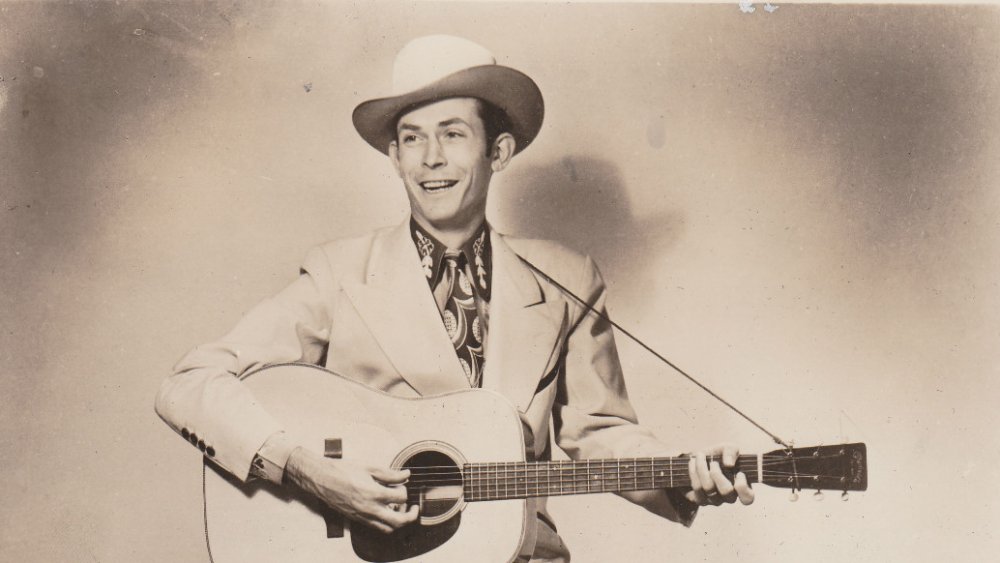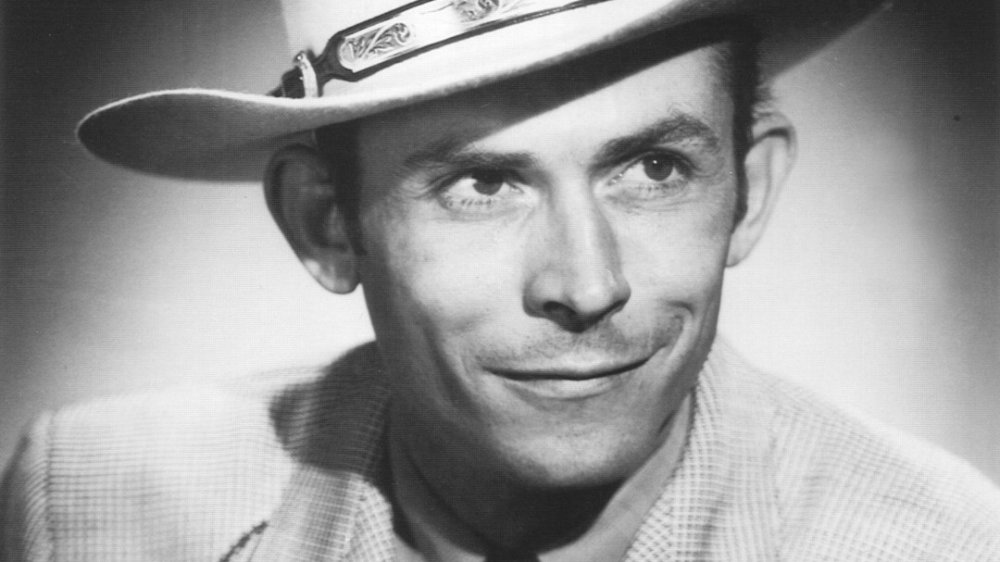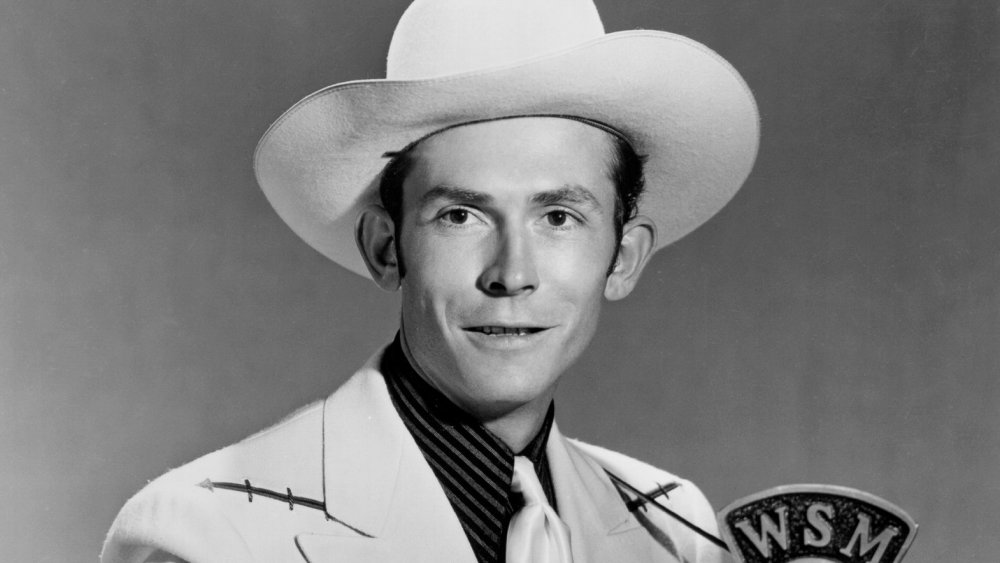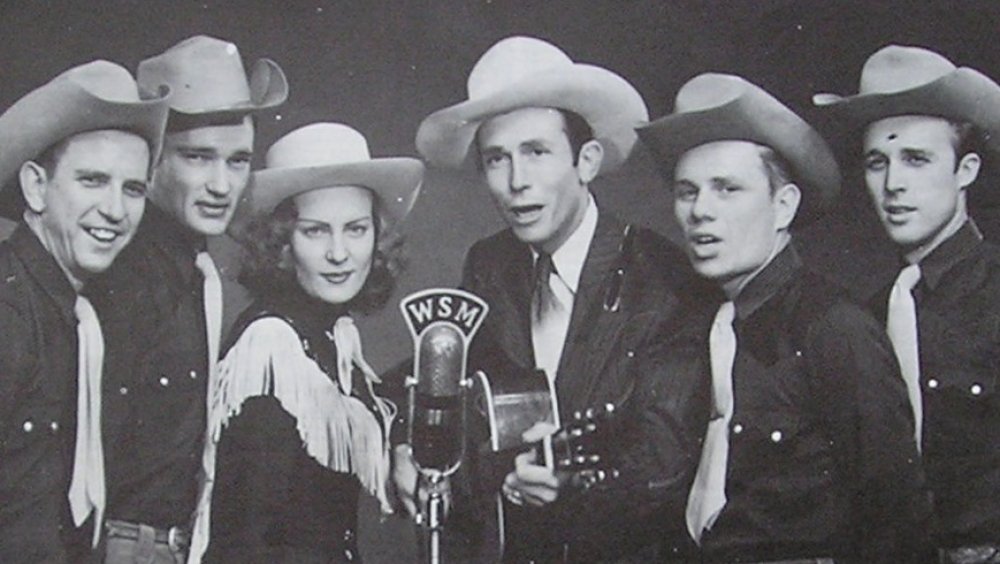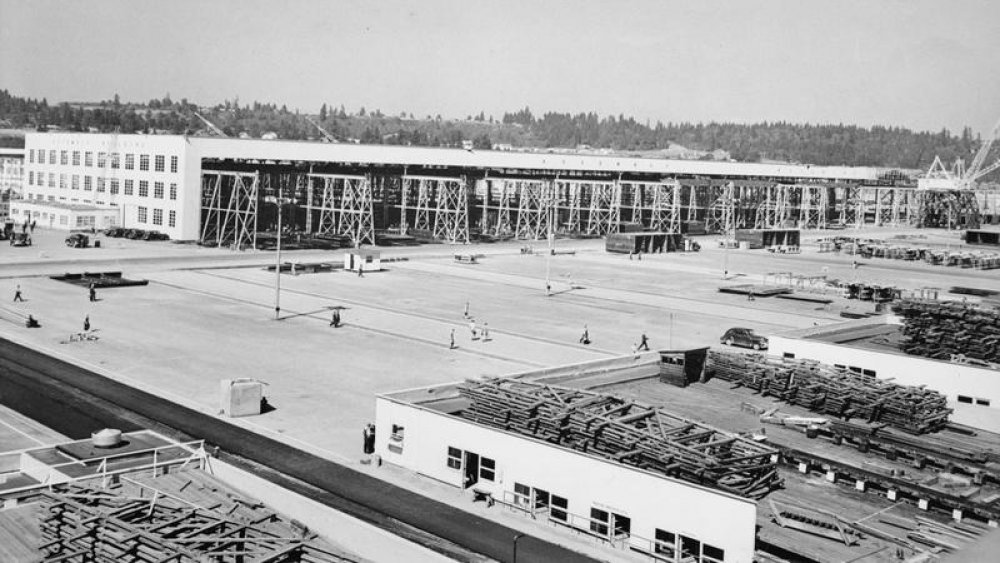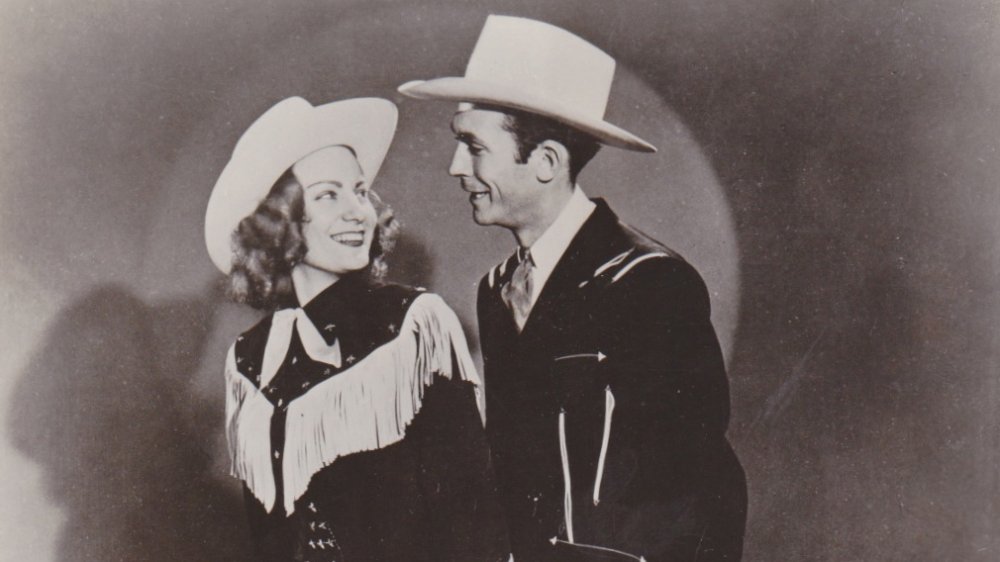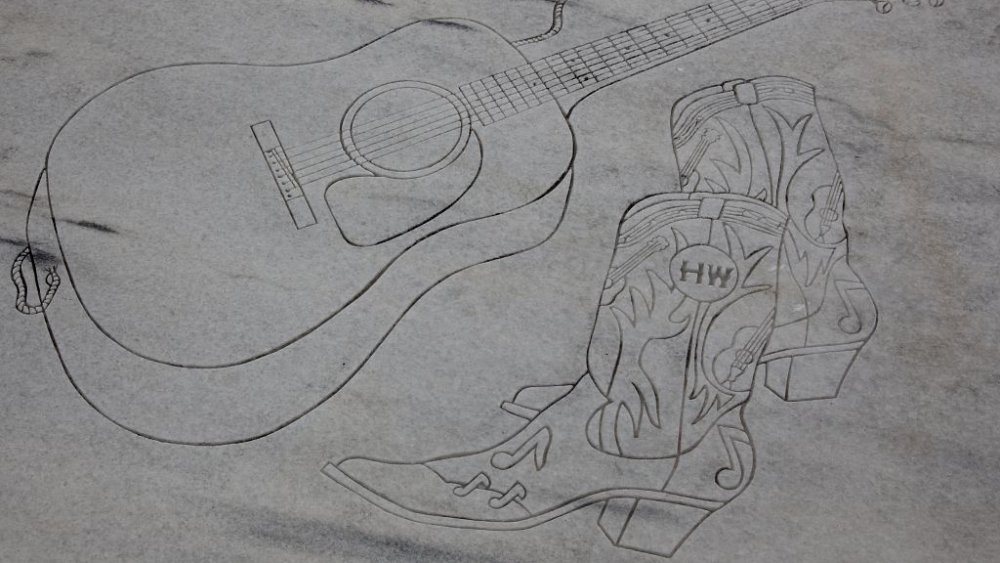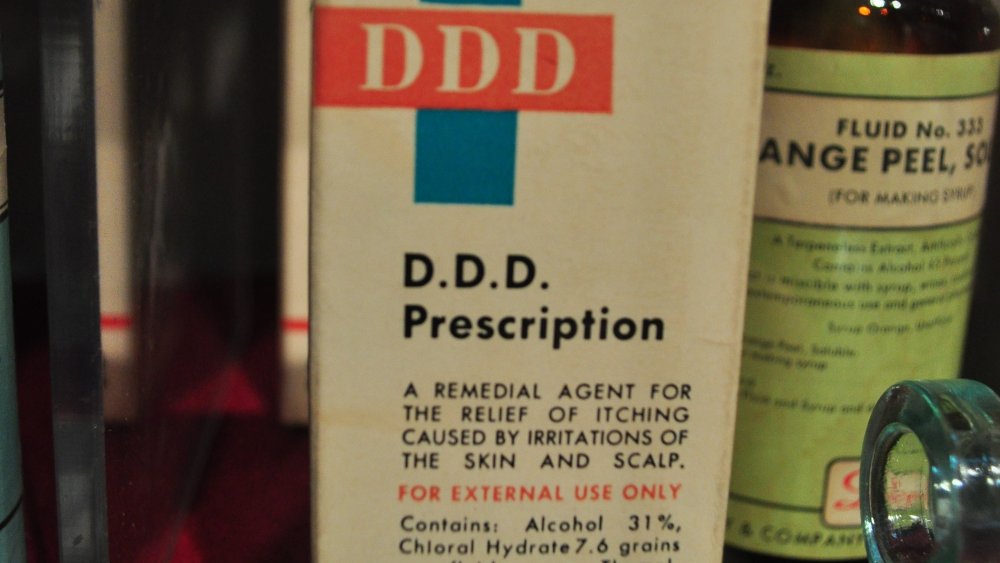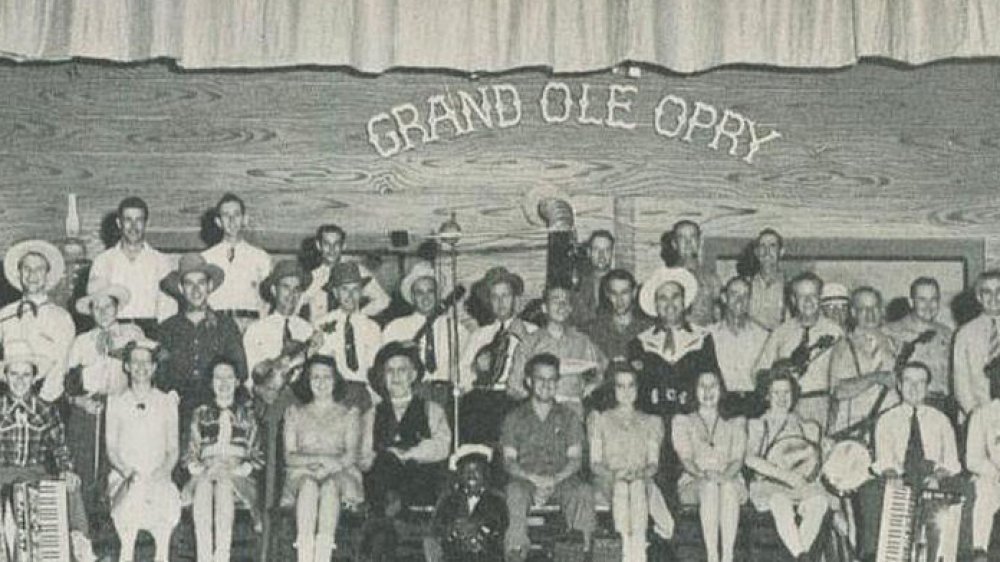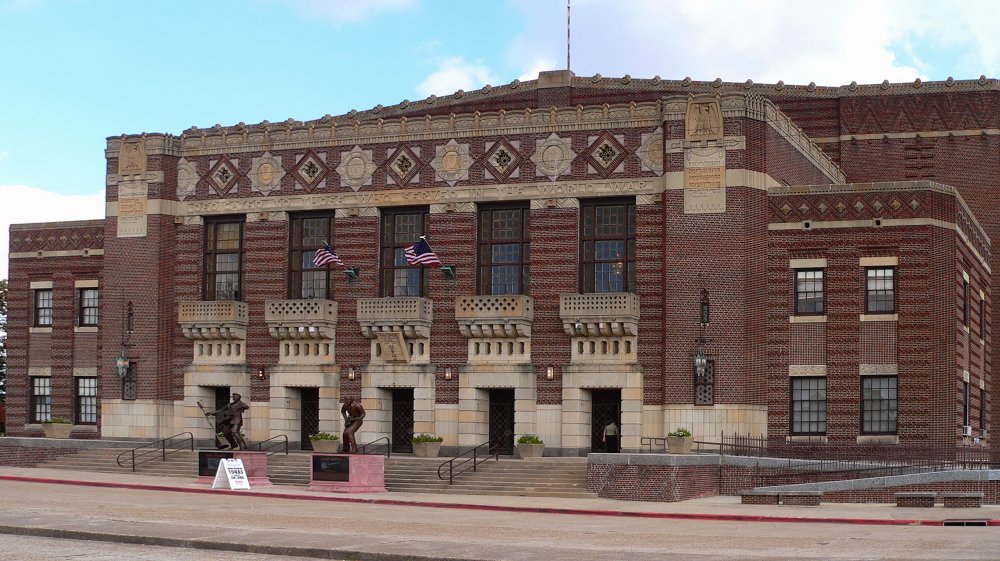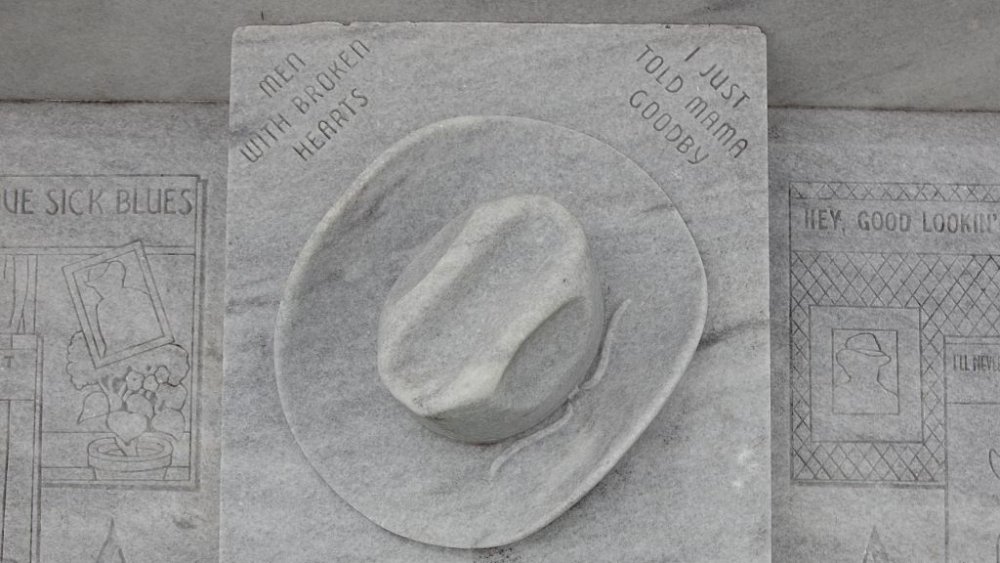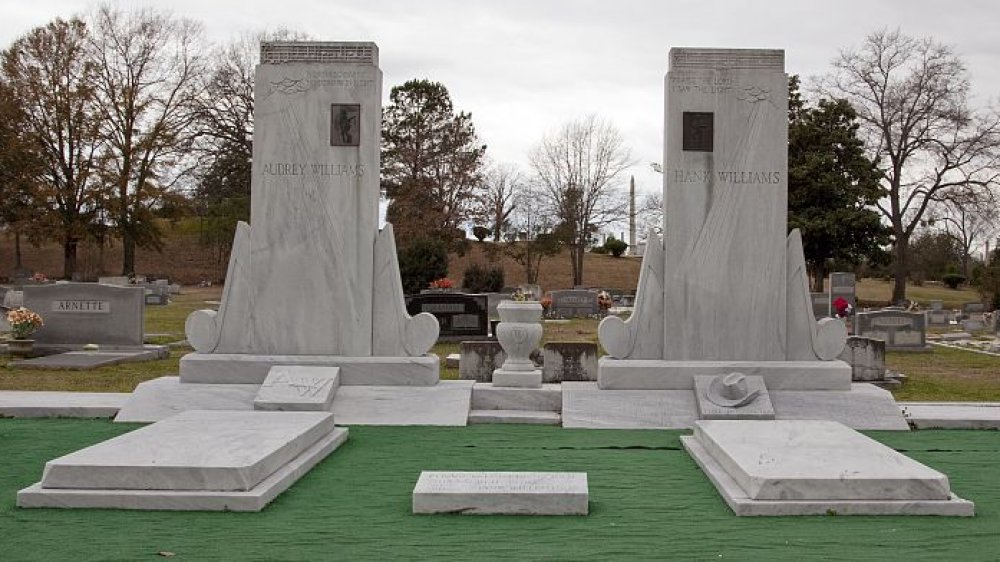The Tragic Real-Life Story Of Hank Williams
Hank Williams, the country legend and Hillbilly Shakespeare, didn't have the opportunity to live in the world long. A lonely and troubled man, Williams struggled with chronic pain and substance abuse issues that would hinder his success and ultimately lead to his untimely death at just 29-years-old. Williams lived fast, both personally and professionally. He picked up music at an early age, gaining unprecedented success with his own radio show when he was still a teenager and achieving a Grand Ole Opry debut at just 25-years-old.
Unfortunately, his fast living also contributed to his downfall. Williams picked up a drinking habit as an early teen that he would never be able to beat. But in the short amount of time he had, Williams gave the world a series of hits, from "Cold, Cold Heart" to "Hey Good Lookin"' to "I Saw the Light," that delighted fans and influenced music for decades to come.
The birth of Hiram Williams
Hank Williams wasn't born Hank Williams. His parents meant to christen him Hiram Williams, after Hiram of Tyre, the Biblical king, but he didn't end up becoming Hiram either. Due to a misspelling on his birth certificate, his official name was recorded as "Hiriam," according to Lovesick Blues: The Life of Hank Williams.
Hank's mother, Lillie, and father, Lon, had briefly settled in a rural area of Alabama called Mount Olive, to start their family. Lillie gave birth to Hank on September 17, 1923, per Biography. Hank was born with a spinal condition, known as spina bifida occulta, which was not well understood at the time. It was never properly treated, and would cause him lifelong back pain. He might have been scrawny and somewhat sickly, but Hank "had a lot of nerve," according to his cousin Taft Skipper in Sing a Sad Song: The Life of Hank Williams. "He would try most anything ... he was pretty independent."
Lon made his living as a logger, so they didn't stay in Mount Olive for long. The family spent the early years of Hank's life moving around southern Alabama, following the work. However, when Hank was only six, Lon suffered facial paralysis as a result of what was most likely a brain aneurysm. He was admitted to a Veterans Administration hospital in Alexandria, Louisiana, where he remained hospitalized for most of Hank's childhood. All the responsibility for supporting the family now fell to Lillie.
The Great Depression had a great effect on Hank Williams' life
By 1930, Lillie was for all practical purposes a single mother, and the Great Depression was hitting the country. But Lillie was a remarkably resourceful woman. She moved the family first to Garland and then to Georgiana, Alabama, where she successfully ran a series of boarding houses. In Georgiana, Lillie landed a coveted job at a cannery, according to Sing a Sad Song. For his part, Hank was always picking up odd jobs, selling peanuts or shining shoes on the corner to make extra cash.
When Hank turned 10, in the fall of 1933, his mother sent him to live with his aunt and uncle in a lumber camp 50 miles west in Monroe County, Alabama. It was there Hank would be given the opportunity to explore what would become his life's two greatest passions: music and alcohol.
Music was a big part of life in the lumber camps, and Williams received his first exposure to true Southern country music. He and his cousin, J.C. McNeil, with whom he was almost inseparable, spent their time listening to gospel music on Sunday mornings and lively string band performances at the raucous parties held in the camps on Saturday nights. At these parties, adults would hide booze outside, but the boys would easily find the stash, and take nips until they got "dunk as hoot owls on it," recalled McNeil. Williams would return to Georgiana the following year with more sophisticated interests.
Hank Williams: The Singing Kid
While it is generally believed his mother gave Hank Williams his first guitar, other locals wanted to claim the credit. Among those were a Ford dealer named Fred Thigpen and a store owner, Jim Warren, who supposedly recognized his talent and gave him his first instrument, according to Sing a Sad Song.
Regardless of how Williams got his first guitar, it is a largely undisputed fact that the credit for teaching him how to play the instrument goes to a man named Rufus Payne. Payne, who also went by the nickname Tee-Tot, was a busker who performed blues on the streets of Georgiana and Greenville when Williams was a boy, per Britannica. Williams credited Payne as his only real music teacher, per the Alabama Historical Association. He died in 1939, but his musical legacy would live on in Williams.
In 1937, Williams moved with his mother and sister to Montgomery. It was the biggest city Williams had ever lived in, and opportunities for the young musician abounded. In his free time, Williams began to perform on the sidewalk outside of Montgomery's radio station, WSFA. The producers noticed his talent, and invited him to perform on air. His shtick as the "Singing Kid" was so popular that he became a regular feature, hosting his own show twice a week. By the age of 14, he was making $15 a week performing on WSFA, via the Montgomery Advertiser.
Hank Williams' drinking began to cause trouble early on
Hank Williams was undeniably a talented young musician. While his WSFA solo shows were successful, it was decided that in order to take his career as a country star to the next level, he would need to form a band. With his WSFA wages, he linked up with another young musician, Smith Adair, and formed a band called the Drifting Cowboys, per Sing a Sad Song. They began to tour around Alabama, charging 25 cents a show. The only problem was that Williams, still school age, had to arrange performance dates around his school schedule. In October of 1939, he dropped out so he could tour with the band full time, per Lovesick Blues.
His mother became the band manager, booking gigs in dance halls and honky-tonks, and collecting admission money. While Lillie worked hard for the band, she wasn't all too popular with the members. According to band member Sammy Pruett, "none of us dug her too damn much."
The Drifting Cowboys were a popular act, but by the age of 16, Williams was already struggling to control his drinking. Booze was freely available at most of their gigs, and Williams took full advantage, which caused tension in the band. Boots Harris, a former Drifting Cowboy, recalled Williams "was pretty bad into the drink ... I'd already quit him once because of the drinking ... I said, 'if you keep drinkin' ain't nobody in the business gonna pay us no attention," via I Saw the Light: The Story of Hank Williams.
Hank Williams wasn't cut out for World War II
When America joined World War II in 1941, the Drifting Cowboys were starting to come apart. By 1942, all the members of the band were drafted except for Hank Williams. Due to his bad back, he received a 4-F deferment from the draft, but there was no hope for continuing the band, per Lovesick Blues. Most young musicians were leaving to fight in the war, and any remaining potential replacements refused to work with Williams on account of his drunkenness and general unreliability. The WSFA radio station was also fed up with his behavior, and in August 1942, Williams was let go from his job at the WSFA for "habitual drunkenness," according to I Saw the Light.
Williams decided to leave the music business altogether. He responded to an ad from Kaiser Shipbuilding, a shipyard company in Portland, Oregon that promised a free one-way ticket, training, free rent, and a steady wage for anyone willing to work.
But Williams wasn't cut out for shipyard work, and didn't last long in Oregon. In November 1942, he headed back to Alabama, working on and off for the rest of the war at the Alabama Dry Dock and Shipbuilding Company in Mobile.
'Cold, Cold Heart'
As the end of World War II neared, Hank Williams returned to performing, but he had fallen far from his days as a star with his own radio show. He made ends meet performing in small medicine shows, pitching cure-alls to crowds from a flatbed trailer. It was at one of these medicine shows in Banks, Alabama in the summer of 1943 that he met Audrey Sheppard, a beautiful blonde with a figure that could "melt the wax off a Dixie cup," per Lovesick Blues. She was a headstrong, recently divorced mother of a 2-year-old, six months his senior and also a musician. They hit it off, and Williams asked Sheppard to marry him almost immediately. But when they finally got hitched in 1944, it wasn't officially legal. A Justice of the Peace married the couple outside of a Texaco Station in Andalusia, Alabama, before Sheppard completed the required 60-day waiting period following her divorce from her first husband, per Sing a Sad Song.
Regardless, they began touring together. She played the bass and sang with the reformed Drifting Cowboys, per Biography. She was ambitious, and Williams began to see real success after his marriage, signing a contract first with Acuff-Rose Music and then with MGM Records and releasing many of his most famous hits.
They had a son, Hank Williams, Jr., in 1949. But their marriage was tumultuous, and provided much of the raw fodder for Williams' more lonesome melodies, most famously "Cold, Cold Heart." They divorced in 1952.
Hank Williams self-medicated with alcohol and drugs
Hank Williams had suffered from back pain all his life. His spina bifida, never properly treated in childhood, was a chronic source of agony. In 1941, he briefly joined a rodeo in Texas, where his condition worsened after he suffered a bad fall. The resulting operation marked the beginning of Williams' addiction to pain medication, per Sing a Sad Song. In 1951, Williams suffered another accident, this time while hunting. He underwent a spinal fusion operation at Vanderbilt University Hospital, according to the Guardian, but the difficult recovery only left Williams even more dependent on painkillers like morphine.
All the while, Williams self-medicated with bouts of drinking binges. Although he attempted at various points in his life to get sober, it never lasted long. He checked into the North Louisiana Sanitarium at the fall of 1951, but was unable to quit drinking for good.
Afterwards, he began to deteriorate physically, putting on weight and losing his hair. His long term substance abuse also began to put a strain on his body, and at the end of 1951, he suffered a minor heart attack, according to Biography. By the end of 1952, Williams was unable to continue touring. His mother flew him home to Montgomery so he could try to get well, according to Hank Williams, So Lonesome.
'A good patient'
In 1952, Hank Williams had the bad luck of meeting a man who went by the name Doc Marshall. His real name was Horace "Toby" Marshall, and he was not a real doctor. According to Hank Williams, So Lonesome, Marshall was actually a high school dropout, who had simply paid $35 to obtain a degree from the Chicago School of Applied Sciences that claimed he was a "Doctor of Science and Psychology." He had also previously been arrested for forgery and armed robbery.
Marshall was a skilled conman. He "knew a good 'patient' when he saw one and he hinted at a 'pleasant' way to handle the problems of exhaustion, depression, insomnia, and all the other assorted ills that tend to beset a harried man," according to Coronet magazine.
Marshall convinced Williams to make him his personal physician, for the price of $300 a week. Under the name Dr. C.W. Lemon, Marshall wrote Williams a series of fraudulent prescriptions for drugs — including morphine, barbiturates, amphetamines, and chloral hydrate — that no doubt contributed to his failing health. Following his death, Williams' family received a bill for $736.39 from Marshall for his services, per Hank Williams, So Lonesome.
Hank Williams was fired from the Grand Ole Opry
Hank Williams first auditioned for the Grand Ole Opry in 1946, but he did not make the cut. In 1949, however, following the release of his hit "Lovesick Blues," it was a different story. On June 11, 1949, Williams made his live Grand Ole Opry debut. The performance was so successful that the audience demanded six encores from Williams before the show could go on, according to History. He was also invited to perform on the Grand Ole Opry's first European tour, performing at military bases overseas at the end of 1949.
Williams was living his dream, but it would only last three years. When he was sober, Williams was a great performer, but as Williams' drinking problem worsened, Opry executives began to lose patience. According to station advertising head Irving Waugh, "It got to a point where he'd disappear for weeks at a time. Nobody would know where he was," via Sing a Sad Song. In August 1952, Williams was fired from the Grand Ole Opry for his failure to show up to Opry-sponsored appearances, according to PBS.
'The purtiest thing I ever saw'
Despite his volatile first marriage, Hank Williams wasn't scared away from the institution entirely. In 1952, Williams began performing with the Louisiana Hayride. While on tour in Shreveport, he met a young woman named Billie Jean Jones. A 19-year-old high school dropout, Jones had recently separated from her husband when she met Williams. According to Jones, he told her, "If you ain't married, Ol' Hank's gonna marry you. You're about the purtiest thing I ever saw," via Sing a Sad Song.
The couple's relationship was stressful from the start. Jones tried her hardest to keep Williams sober, attempting to enforce a limit of two cans of beer, saying, "If he got more, I'd force milk and two raw eggs down him, then I'd call my brothers to pack him off to the hospital."
Like his first marriage, Williams did not want to wait to marry Jones. The couple were married in Louisiana by a Justice of the Peace on October 18, 1952, but Jones' divorce would not be officially finalized until October 28, 1952, according to Hank Williams, So Lonesome. This time, the legality of the marriage would cause real trouble for Jones. Following Williams' death, both Sheppard and Jones battled over his estate, each vying over the title of Hank Williams' widow. In January 1953, Jones went to court, but the judge ruled that her marriage to Williams was illegal. She received a $30,000 settlement, but gave up all rights to his estate and name.
Hank Williams never met his daughter
In the summer of 1952, Hank Williams had a brief affair with a dancer named Bobbie Jett. He had no intention of staying with Jett, as by this point he was already infatuated with Billie Jean Jones. However, he discovered shortly before his wedding to Jones that Jett was pregnant. Williams was still set on marrying Jones, so he and Jett devised an arrangement. They agreed that Williams' mother, Lillie, would raise the baby, with Williams and Jett having visitation rights. On her third birthday, custody would go to Williams. He would have custody until the child turned five, when they would then assume joint custody, per Lovesick Blues.
Ultimately, that would never happen. His daughter, christened Antha Belle Jett, was born just five days after Williams' death. Per the agreement, Williams' mother adopted the baby. Unfortunately, she died in 1955, just three years after her son's death, so little Jett went into foster care, becoming a ward of the state before she was eventually adopted.
According to the Guardian, her identity was undisclosed for years. She did not discover she was Williams' daughter until her adoptive father disclosed the information when she was 21. Her bloodline was not legally recognized until 1987, and she was not granted rights to her birth father's estate until 1989. She became an accomplished musician in her own right, performing under the name Jett Williams.
Hank Williams passed away at just 29-years-old
Despite persistent health problems, Hank Williams decided he wanted to go ahead with the performances he had scheduled on New Year's Eve of 1952 and New Year's Day. The first concert was scheduled to be performed in Charleston, West Virginia, but his plans were disrupted by an ice storm that delayed his travel.
Unable to fly, and now unable to make it to Charleston on time, Williams hired a driver named Charles Carr to drive him to Canton, Ohio for the New Year's Day show. Carr stopped at the Andrew Johnson Hotel in Knoxville, Tennessee, where Williams began to feel ill, hiccuping and convulsing, according to Lovesick Blues. Carr called a doctor to Williams' room. The doctor injected him with B6 and B12 vitamins and declared him fit for travel the next morning. The next day, Williams was still unwell, curling up in the backseat and saying all he wanted was to sleep.
Somewhere around Oak Hill, West Virginia, Carr looked into the backseat and realized Williams seemed rigid and unresponsive. Per the Tennessean, Carr recalled the incident: "I thought he was asleep ... I reached over and touched him. He was cold." He pulled into a gas station to receive directions to the nearest hospital, but it was too late. By the time Carr arrived at Oak Hill Hospital, Hank Williams had passed away.
